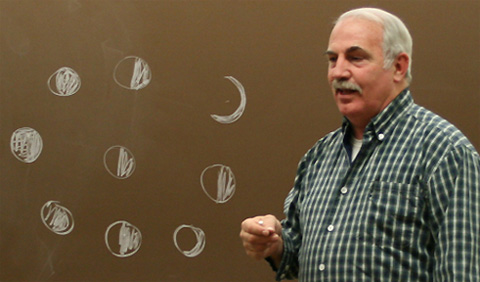“Scientists who study deep space and string theory usually don’t get that worked up over lunar eclipses,” writes Dean Narciso in the April 13 Columbus Dispatch.
But at 2 a.m. on Tuesday, April 15, “Earth will block the sun’s light from reflecting off the moon, causing a total eclipse — the first of four that will occur every six months. The event is called a ‘tetrad,'” he writes.
For people in academia, the tetrad will be a way to “get lay people to speak with scientists — sort of an outreach opportunity,” said David C. Ingram, chairman of Ohio University’s physics and astronomy department.
The first begins just before 2 a.m. on Tuesday. But the real show, weather permitting, peaks about an hour later. That’s when Earth’s shadow, or umbra, will entirely block the sun’s rays from illuminating the moon.
Light rays that bend around Earth’s edges will give the moon an eerie, reddish glow. That’s why it’s called a “blood moon.”
“The moon can have variations of this hue depending on Earth’s atmospheric conditions at the time,” said Joe Renzetti, the president of the Columbus Astronomical Society. “The more humidity or particulate matter, the darker the hue. Occasionally, a lunar eclipse can appear brown or blue.”
An even better show would be looking at Earth from the moon. The planet would appear to have a ring of fire, representing every sunrise and sunset around the world — simultaneously.




















Comments